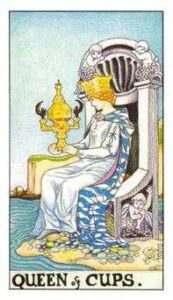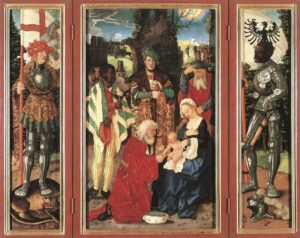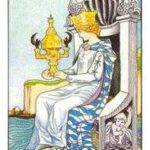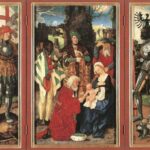
Living in a Culture That’s Lost Its Heart
“To learn how to fully live Eros makes a major contribution to the world around me, because this is a culture that’s lost its heart;
 Recently I wrote about how a book on personality types I read at the age of 18 used the central metaphor of a tree to describe my “type.” In those days I had no idea a symbol could have important meaning for me. But what I have learned since convinces me that whether the author’s choice to use this symbol was random or deliberate, it was perfect for one whose driving force is the search for meaning and purpose.
Recently I wrote about how a book on personality types I read at the age of 18 used the central metaphor of a tree to describe my “type.” In those days I had no idea a symbol could have important meaning for me. But what I have learned since convinces me that whether the author’s choice to use this symbol was random or deliberate, it was perfect for one whose driving force is the search for meaning and purpose.
“To learn how to fully live Eros makes a major contribution to the world around me, because this is a culture that’s lost its heart;
“. . . when our left and right brain work in harmony, we begin to access our deeper Self and feel its guidance and support.

Those of us raised as Christians know this holiday is about a lot more than rushing about, partying and shopping, and many of us enjoy warm memories and nostalgic feelings this time of year. But why are the moments of love, joy and peace so difficult to find during the holiday season? Where do the feelings of exhaustion, anxiety, disappointment and depression come from? Why do we keep missing the point of Christmas? How can we recapture it?


Website design and development by Chad Lieberman
40 Responses
I enjoyed reading this. Thank you for sharing the multi-cultural symbology – I found it very interesting.
HI Jerome,
I’m so glad this post spoke to you, and thank you for writing about it in your blog today. Before the time I mention in this post my best friends were an oak and a pecan tree in my yard. And my first spiritual awakening at the age of 17 occurred when I was sitting in the Ocala National Forest with my back against a bald cypress. It occurs to me now after all these years that for as long as I can remember certain trees have activated my spiritual yearning: especially oaks. But it was such a normal experience for me that it never occurred to me to write about it. Thanks for stirring the pot and raising my awareness about something I’ve taken for granted before now.
Many blessings,
Jeanie
Oh, Jeanie,
And then there is the Celtic Ogham, the tree alphabet of the ancient Celts, that I set out to learn several years ago, but never a linguist, found it too daunting.
This post touches such universal insight, so appropriate for understanding our life journey, but also for the season. In the dark days of February, the tree having lost all its leaves, has few signs of life to the outward world, but of course, new growth is building from within ready to burst forth when the time is right.
And to carry the metaphor in a little different direction, it’s good to remember that the mighty oak began as a tiny seed buried underground, where its initial transformation began. It probably had to struggle
to reach the surface, find light and though tender and vulnerable at first, with good nourishment it put out those many magnificent branches you beautifully describe.
Again, thank you. I do enjoy your posts.
Namaste, Sally
Dear Sally,
Your comments always add meaningful dimensions to my topics, and I thank you for that! I’ve never heard of the Celtic Ogham! Will google it asap!
Trees do seem to speak to many of us in such a special way, not just mentally but at a physical, visceral level as well. It always surprises me when others don’t react to them as strongly as I do. I remember walking down an oak-canopied dirt road toward Florida’s Intracoastal Waterway at the Canaveral Seashore Park with friends one day and being blown away with wonder. It felt as if we were in an exquisite cathedral, yet the others were chatting away as if there were nothing unusual about this extraordinary setting. I couldn’t understand why they didn’t see or feel it. Now I realize this isn’t part of everyone’s experience: there are many paths to God.
Namaste,
Jeanie
As to your question about symbols.
The “evil key” symbol has often presented much thought to me.
I also like heart symbols.
Hi Joan,
I’ve never heard of the “evil key.” Can you say more about it and what it means to you? I like heart symbols too, and am looking at a palm-sized stone one on my desk as I write this. I never “got” hearts until I started realizing how closed mine was. So now I keep them around to remind me to allow myself to feel. Thanks for writing.
Blessings,
Jeanie
Jeanie, this is such a beautiful piece of thought and writing, I don’t know where to begin. I love the way you are connecting the big picture to the individual puzzle pieces…..some of which, of course, are our own lives.
I am reminded of “The White Goddess” by the great poet and scholar, Robert Graves. A massive tome by any standard, it uses an ancient Druid set of riddles to cover an extraordinary range of human knowledge and experience. The answer to each of the riddles is the name of a particular tree. Graves also wrote about classical Greek culture in such works as “I, Claudius” and so on. A towering mind and heart.
For the Toltecs and related peoples in ancient Mexico, the ruler was associated with a specific tree, whose spreading canopied protected and sheltered all. For the shamans in the same tradition, the World Tree stands at the center of the world, its trunk and branches extending up into the 9 higher Skies of existence while its roots extended down into the 4 lower Underworlds. It was this World Tree that shamans used to travel through the higher and lower worlds in their shamanic journeying, especially in their role of healers during soul retrieval ceremonies. The World Tree, therefore, is not physical and is everywhere, providing access to the full range of the soul’s potential experience, the very Portal of Creation.
The Great Mystery can be boiled down, I believe, to a single question: How is a great oak squeezed down into a tiny acorn?
When I was 6 yrs old, I practically lived in the giant weeping willow outside our house in rural Ohio. One night, one of those Mid-West thunderstorms sent a bolt down that literally blew the tree apart at the ground. The next morning, all that physical space that had previously been occupied by my friend and teacher and playmate was suddenly and irrevocably and impossibly empty. I remember that Glimpse today as if it were yesterday and not 55 yrs ago: it was my first glimpse of Nothing.
It is such a joy and privilege to share this journey of exploration with you, Jeanie! Looking forward, William
Wow, William. Thanks for adding so many wonderful associations to tree symbolism. I’m not familiar with the White Goddess, but have read his translation of The Golden Ass several times and adore it for its Psyche and Eros myth. Somewhat coincidentally, I’m planning an upcoming post on Psyche as a symbol of the awakening soul — the acorn that blossoms into a mighty oak, if you will — the Great Mystery, indeed.
Your story of how the destruction of your beloved willow tree led to your first glimpse of Nothing is extraordinary. I wonder how many of us have had spiritual awakenings involving trees. From a “cosmic” perspective it almost seems as if that could be the spiritual purpose of trees: to awaken us to the sacred miracle of life. They have certainly played a role in my awakening.
Your feeling of joy and privilege is mutual, and I am reminded of it with each comment you make about one of my posts. Thank you.
Jeanie
Hello Jean,
I am a big fan of this tree: http://www.bkwsu.com/whatwedo/courses/fcirym/topics.htm/treeoflife.htm?set_language=en
Hi Elza,
So am I! Thanks very much for the link to the great article on the symbolism of the Tree of Life.
Blessings,
Jeanie
Hi jean
I’m researching the meaning of trees for a logo, around wooden toys and children. I googled ‘maternal trees’:) and found your blog. I am so stirred and moved, It is beautiful especially for what you revealed about birch trees….I have oaks and birch’s written down next to me. Thank you for such an intimate but balanced and intelligently written piece. Lots of love, life and tree hugs to you!
Hi Hills,
I’m delighted you stopped by. Your comments warm my heart. I’m so glad this post was of help and I very much appreciate your taking the time to let me know.
Oaks are my personal favorite, but I once loved a Japanese plum, or loquat, and it loved me back by providing delicious treats!
Many blessings and tree hugs to you too!
Jeanie
Jeanie–trees have been a growing source of inspiration for me. After I met Elizabeth we were at a week long retreat with Rabbi Zalman-Schachter Shalomi and I decided that I wanted to have a Hebrew name. When I was born giving Hebrew names to children had fallen out of disfavor with Reform Jews. After some discussion, he suggested the name Elan, which means tree in Hebrew. It was a perfect fit. Then in the mid-nineties i wrote a psycho-spiritual novel entitled The Kingdom of Nowt–the story of a race of tree creatures known as Treemungermen who have come to a young boy who has been prophesized to be the one to save them and the earth. Then, in last couple years I have turned my eye to photographing tree trunks. You can see the images at http://www.richardstonephoto.com.
Thanks for the article.
Dear Elan,
Thank you for including the link to your site. Your photographs are absolutely gorgeous and the shapes, colors, patterns and compositions you’ve captured are exquisite. I hope others who read this will check them out.
It sounds as if we are similarly drawn to creative ways of expressing our search for meaning, purpose, and self-knowledge. I love your book about storytelling and hope to read your novel some day.
Thanks for writing.
Tree hugs,
Jeanie
Will bring a copy of Nowt up to the mountains for you.
Awesome! I look forward to it.
hi dear Jean
im a student that working on my thesis about Anima/Animus in two works of Virginia Woolf,To the Lighthouse and Orlando. i have some problem with finding this Archetype in these novels.my question is whats my main task to do? to find Anima/Animus just as images which represented by the writer or to study and examine the characters or events as a Jungian psychotherapist? im confused. please give me some directions and guide me. my field of study is English language and literature. im from iran thanks a lot.
Dear Maryam,
I would study and examine the characters and events as a Jungian analyst. I’d look for how characters are projecting their own anima/animus onto other characters and expecting them to conform to their expectations, etc. I’m reading an excellent book by a Jungian who demonstrates exactly how to do this. I have a kindle edition from Amazon.com It’s called Adventure in Archetype by Mark Green. I’d highly recommend it!
P.S. I’ll also be talking about this on my next post. Jeanie
I recognize what you feel about trees, and I really loved to read it. One of the things I love are old men who look like trees, and trees who look like old men. According to me, trees are the biggest masters of life. Did you know that the Maori believed that Tane, the god of the forest, separated Father Sky from Mother Earth to bring light in the world? The perfect man is also described as a tree; with his head in the sky and his feet in the earth. At the end of the world, the spirits of the maori descent in the ocean by a tree called Te Aroha. That means “Absolute Love”. In the ocean they return back to the source -Hawaiki-… or back to the roots.
Since I am a child, I was obsessed by Yggdrasil and the forest. I am writing a story based on the journeys of life. It is about traveling physically in the world, but also growing spiritual. The structure of the story is based at the structure of Yggdrasil (nine worlds, nine themes). I look up different sources, and different stories… about trees. So that is how I find your blog, and this article. In fact, I think I am more obsessed by trees, because my journey from girl to a mature person started when the too good grandfather (a typical archetype in the beginning of a lot of fairytales) died when I was 17 years old. He died when a tree felt on him and broke his neck. Now, 6 years later, I accept his dead by connecting back with the trees, and their lessons about the beginnings -and endings- of journeys. Sometimes things has to die, so new things can grow. When I did WWOOFing in New Zealand, an old man told me that sometimes farmers put nails in trees, so they become unhappy, because unhappy trees procreate fruits. That is why there is also a winter; when a tree feels he dies, he becomes stronger, and will procreate fruits. That is also for the most men; most artists and revolutionists were first unhappy to create the most beautiful things. Trees are really the masters of the world and life. Every meaning and interpretation is a guideline…
Hi Wendy,
What a delightfully informative comment! Thank you. I did not know about the Maori associations to trees, nor the fact that farmers put nails in trees to make them bear fruit. In Jungian psychology it is the same. Personal discomfort, inner suffering, is what initiates the deeper spiritual journey and brings forth our creativity! I agree with you that not only trees, but actually every aspect of nature has a meaningful lesson for us if we look for it.
Thanks for the reminder, and thanks for writing,
Jeanie
Hi Jean,
I came across your blog while googling the symbolic meaning of trees. Trees have been around me all the time, I just never paid attention to them before until recently.
One day, I started noticing the life surrounding trees – butterflies chasing each other around a branch, birds flying in and out of the canopy, creepers climbing up the trunk, ferns hanging from the boughs. I started noticing young shoots pushing up from the crowns, sunlight beaming on the first flowers, petioles of tender leaves growing stronger each day, the mosaic made up of different shades of green. I started noticing life and growth, yet at the same time, a certain centeredness and tranquility.
Thank you for sharing your thoughts and your journey in inner work. They speak to me 🙂
Hi yan,
I’m glad this post spoke to you. I hope you’ll come back again!
Jeanie
Outstanding post, Jean! Love & Light, S
Thanks, Sloan. So glad you liked it!
Jean Raffa, Author Blog: http://jeanraffa.wordpress.com/ Email: jeanraffa@aol.com Fan: https://www.facebook.com/jeanraffa Follow: https://twitter.com/#!/jeanraffa
Website: http://www.jeanraffa.com
HI Jeanie,
I just read your Symbolic Meaning of Trees.. Long ago a friend told me I look for the shade without realizing I am the tree. Only recently have I really understood what she meant. About the same time she told me this, I was talking with a male friend who was struggling with some serious marital issues and the care of an adopted child. As he sat in my office, I told him how the trees outside my windows represented peace to me. I told him I looked at them as the forty shades of green in my life representing how varied life can be and how we all have the struggles to deal with but also how we have the special moments that never last long enough but we treasure each of them. When he left me that day I felt somehow he was better than he had been when he arrived to see me that day..
To this day when I am troubled I go and sit in the presence of trees and somehow things are calmer and easier to deal with. Wind in the trees is one of my favorite sounds. I move toward it when I hear wind sounds and stay close to it as long as my time allows..
Hi Marsha,
Thanks for those lovely stories. There’s no getting around the fact that trees, like mountains and oceans and snakes, are among the most powerful images of archetypal patterns in us. To me they speak to our awareness of the mystery and sacredness of life and our yearning to understand and connect with this mystery while remaining fully grounded in reality and our personal truths. Your stories validate that interpretation for me: they seem to speak to a spiritual awareness and grounding in you that’s comforting and affirming to others.
I recently took my 5 year old grandson for a walk on a particularly blustery day and we watched the bald cypress trees dance and listened to them sing. Trees, like music, have an extraordinary power to fill us with wonder, to soothe and comfort and heal. I hope he felt that. I hope he remembers it as he faces the normal trials of growing up.
I think you have made a splendid parallel between mother-leaving and the fall from paradise, which by the way it is so missunderstood; rather, the rise from paradise, as the meaning of humanity is to search for knowledge; who wants to return to innocence anyway?
Thanks, Alex. I like your term, “rise from paradise” very much! Leaving the maternal matrix (the unconscious amorality of a child) to begin the journey to psycho-spiritual maturity is a choice to grow up into a new level of expanded consciousness in which we make original choices and assume responsibility for our own actions. The person who continues to maintain his/her innocence in the midst of the messes s/he creates is stuck in a state of not-knowing that is the source of all evil-doing. Who, indeed, wants to return to that?
I think the key point is awareness. If one is not able to sharpen her/his awareness through introspection and study it is impossible to even want to exit the comfort zone. Yes, “rise from paradise”, because the forbidden fruit was in fact the “truth”, the path to freedom. To not obey in ignorance it is the sign of a free and of a strong will. It is very questionable (from a personal point of view) how come that the foundation of a big dogma (that ruled the humanity in the last 4000 years) is preaching about “fall” and “sin”.
Yes, awareness is key. I’m reading a wonderful book by Anne Baring, The Dream of the Cosmos, that discusses the development of the myth of the fall and the doctrine of original sin in Chapter Seven. I highly recommend it if you haven’t read it! These dogmas have been, and continue to be, major obstacles in our endeavor to evolve into greater awareness.
Hi Jeanie,
I recently had a vision of a gigantic tree growing and protruding up from the bottom of earth. The tree finally rose through the huge cracks of the earth and is heading straight into the heavens after years of growth below the cracks that I am not particularly aware of. So I decided to google the symbolic meaning of trees and I found this short article. Now, what can my vision mean? some kind of awakening? I am only 20. I’d like to hear what you think.
Thanks,
Kitok
Hi Kitok,
I couldn’t say exactly what your dream means without knowing your associations to its symbols, the feelings that accompanied it, your current waking life situation, etc. Even then, it wouldn’t be easy to figure out. This feels like a big dream. It seems to speak to massive growth and energy that’s been going on unconsciously and is beginning to surface; as you say, an awakening of some sort. I’d write it down with as many details as you can think of, including your emotions in the dream, and save it. Then just carry the images and feelings around with you in your daily life while paying attention to any feelings, experiences, or images that remind you of it. Eventually, with attention, the dream will reveal itself to you. Best wishes to you on your journey,
Jeanie
Very interesting post, thank you.
Trees are very special to me too. I remember the first time, many years ago, that I became aware of the ‘presence’ of a tree, the connection was so sudden and un-prompted by me, I was totally in awe. The feeling of that first time, and others since, never leaves does it.
No, it doesn’t. As a child I had three trees in my yard that felt like special friends. I spent considerable time in all of them, reading. contemplating, imagining, and I still feel awe in the presence of certain trees; usually oaks.
Great article and comments. Some of my fondest memories as a child in Upstate NY echo the experiences of other folks here. We built tree houses in one of two massive willows bracing sticks across massive trunks and covering each variation with musty camping canvases to enclose the refuge. (Our father, coincidentally, prone to frequent fits of impatient rage). We also climbed supple maple trees that had sprouted up along the edges of fields. It was ridiculously dangerous due to the heights I methodically reached (always one hand grasped on a tested branch and the other on a “backup”) but I never slipped far. On windy days, especially with an approaching storm, we “sailed” in the wildly swaying crowns.
Belatedly adding to the extraordinary insights already made by others, the shamanic notion of trees as wise witnesses to history and of course how they selflessly enable knowledge via paper/books.
Thank you, Edie. So many of us have such wonderful childhood memories of trees. Yours sound especially adventuresome! I love your note that trees are also “wise witnesses to history and…[that] they selflessly enable knowledge via paper/books.” I hate to think what our level of collective awareness would be today if we were still writing on clay tablets!! Trees gave us a perfect medium for spreading knowledge that has served us very well. But hopefully, now that electronic communication has arrived, we’ll start leaving them alone to provide the oxygen we need to continue to evolve into consciousness. Thank you for writing.
androgyny is not the same as the integration between the masculine and feminine principles.
True, but symbolically and historically, (as in alchemy), the symbol of the androgyne has been used to suggest the union of the feminine and masculine. Here’s a description that addresses this: https://www.angelfire.com/biz/mereproject/copy_of_androgyne2.html
“The Androgyne is the visual representation of Primordial perfection; wholeness; the unconditioned state; autonomy; paradise regained; the reunion of the primordial male-female forces; the union of heaven and earth, king and queen, the two becoming ONE, the all-mother and the all- father.”